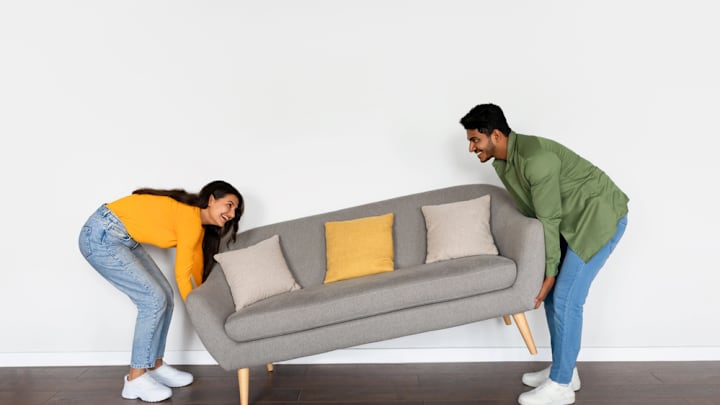The Ritual of Rearranging: Why Moving Your Furniture Might Be a Personal Reset in Disguise

It usually starts with a random urge—maybe you’re sipping coffee and suddenly the couch feels like it’s in the wrong spot. Or you’re vacuuming and think, “What if the bed went on that wall?” Before you know it, you're dragging chairs across the floor, pushing a table with your hip, eyeing corners you haven't thought about in months.
Rearranging furniture is one of those strangely satisfying things we do without always knowing why. We just feel it. A shift. A need to refresh. A sense that something inside us needs to move—and somehow, the quickest way to do that is by rotating the rug 45 degrees.
And here’s the truth: it's not just about aesthetics. It’s psychological. Emotional. Maybe even spiritual.
Our physical environment doesn’t just hold us—it reflects us. And when we feel off, stuck, or ready for something new, our instinct often shows up in how we treat our space. Rearranging becomes a ritual, a quiet form of self-communication that says, I’m ready for something different—even if it’s just the angle of this chair.
There’s a reason it feels so energizing to move a room around. It shakes up the visual landscape. You start seeing things differently—not just the room, but your day, your habits, your thinking. That chair you never sat in because it faced the wall? Now it catches the morning light. That corner that always felt dead? Now it’s a reading nook. The physical shift becomes a mental one.
It’s also an act of reclaiming control. Life doesn’t always let us change the big stuff. The job might be draining. The routine might feel stale. The outside world may feel chaotic. But the coffee table? That’s yours. That, you can move. And that little action can ripple far beyond the living room.
There’s power in touching your environment. In taking back ownership of your space with your own two hands. In making the familiar unfamiliar, just enough to spark something new.
Even the process itself is oddly meditative. You pull the couch out and discover a lost sock, a crayon, a coin from a trip you forgot you took. You sweep the baseboards you usually ignore. You pause to test the acoustics in different corners. It slows you down, grounds you, brings you right back into your body.
And you don’t need a plan. This isn’t interior design. It’s interior alignment. You don’t need mood boards or perfect symmetry. You just need curiosity. What if the mirror moved? What if the bed faced the window? What if you gave the dining table just a little more breathing room?
You’ll know when it clicks. The room will hum differently. The light will fall just right. You’ll sit down and feel… new. Like you unlocked a cheat code to your own environment.
And that’s the beauty of it: nothing has changed, and yet everything has.
It’s easy to dismiss rearranging as a superficial pastime. But anyone who’s ever flipped a room during a breakup, a career change, a quiet internal crisis, or even a random Tuesday afternoon knows better. Rearranging is a statement. A pulse-check. A declaration that says, I’m still here, and I’m paying attention.
Because our homes are more than backdrops. They’re maps. Mirrors. Mood boards for the soul.
And sometimes, when life feels too big to sort through—repositioning the couch is how you start.